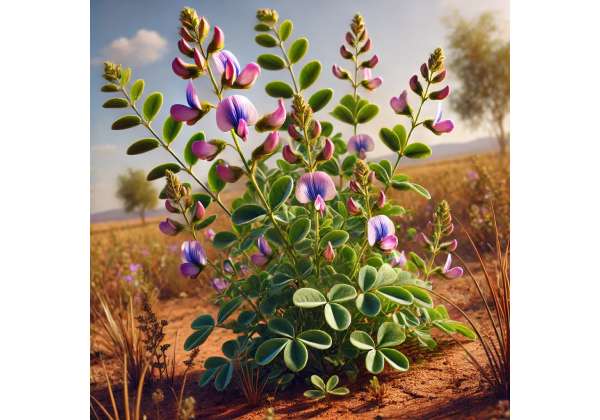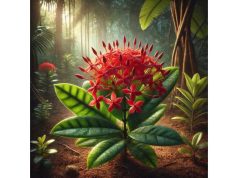
Indigo is a time-honored herb celebrated for its striking natural pigment and diverse therapeutic potential. Used traditionally in various cultures, it offers promising health benefits that range from anti-inflammatory to antimicrobial effects. This multifaceted botanical marvel is not only revered for its medicinal applications but also for its vibrant contribution as a natural dye. In this comprehensive guide, we delve into Indigo’s botanical profile, explore its active chemical constituents, and detail its healing properties and applications. Whether you are a herbal enthusiast or a researcher, discover how Indigo can play a transformative role in natural health and wellness.
Table of Contents
- Comprehensive Botanical Profile and Identification
- Phytochemical Analysis and Key Active Ingredients
- Unique Health Advantages and Core Attributes
- Diverse Applications and Safety Considerations
- Research Insights and Pivotal Study Findings
- FAQ
Comprehensive Botanical Profile and Identification
Indigo, primarily derived from species such as Indigofera tinctoria, belongs to the legume family and has a rich history interwoven with both cultural tradition and modern research. Native to tropical and subtropical regions of Asia and Africa, this herb exhibits unique botanical characteristics that have intrigued botanists and herbal practitioners for centuries.
Taxonomy and Botanical Classification
Indigo’s scientific classification places it in the family Fabaceae, characterized by its compound leaves and pea-like flowers. The genus Indigofera comprises over 750 species, yet I. tinctoria is particularly noted for its dye-producing capabilities and medicinal value. The taxonomy is as follows:
- Kingdom: Plantae
- Order: Fabales
- Family: Fabaceae
- Genus: Indigofera
- Species: I. tinctoria
Morphological Features
The plant typically features trifoliate leaves with smooth margins and a deep green hue. Its flowers are small, predominantly blue, and arranged in racemes, exuding a delicate aroma that attracts various pollinators. Key morphological traits include:
- Leaf Structure: The leaves are pinnately compound with three to nine leaflets, each bearing a glossy surface.
- Flower Characteristics: Small, vibrant, and usually blue, the flowers form clusters that provide the plant with its signature aesthetic appeal.
- Root System: Indigo possesses a deep and extensive root system, which aids in its survival across varied soil types and contributes to its drought resistance.
- Growth Habit: This perennial shrub thrives in warm, sunny climates and adapts well to both cultivated fields and wild environments.
Growth Conditions and Cultivation
Indigo is renowned for its resilience and low maintenance requirements. It flourishes in well-drained soils, particularly those with a slightly acidic to neutral pH. Key cultivation practices include:
- Climate Adaptation: Prefers warm, humid climates but can tolerate moderate drought once established.
- Soil Requirements: Thrives in loamy or sandy soils with adequate organic content.
- Propagation: Commonly propagated through seeds or vegetative cuttings. Optimal germination occurs when seeds are sown at the onset of the rainy season.
- Harvesting: The leaves are typically harvested during the flowering stage to maximize the concentration of active compounds.
Natural Habitat and Distribution
Historically, Indigo has been cultivated in regions of India, China, and parts of Africa. In its native habitat, it grows alongside a variety of other medicinal plants, contributing to the biodiversity of the ecosystem. Its widespread use as both a dye and a medicinal herb has led to its cultivation in many parts of the world, adapting to diverse environmental conditions while maintaining its potent properties.
Cultural and Historical Significance
Throughout history, Indigo has played a significant role in traditional medicine and textile industries. Ancient texts mention its use for treating various ailments, from skin disorders to respiratory issues. Additionally, its ability to produce a rich, blue dye made it a coveted commodity in trade and fashion, influencing art, culture, and commerce across continents.
Summary of Key Characteristics
- Botanical Family: Fabaceae
- Key Species: Indigofera tinctoria
- Distinctive Features: Trifoliate glossy leaves, vibrant blue flowers, extensive root network
- Ideal Conditions: Warm climate, well-drained acidic to neutral soil
- Traditional Uses: Medicinal applications and natural dye production
This botanical overview not only emphasizes Indigo’s aesthetic and agricultural value but also underscores its importance as a resource in traditional medicine. By understanding its physical traits and growing conditions, enthusiasts and researchers alike can appreciate the versatility and enduring legacy of this remarkable herb.
Phytochemical Analysis and Key Active Ingredients
Indigo is a treasure trove of bioactive compounds that contribute to its therapeutic properties and natural dyeing capabilities. In this section, we explore a detailed list of the primary chemical constituents that make Indigo a subject of scientific interest.
- Indigotin
- Role: This is the principal blue pigment extracted from Indigo.
- Properties: Indigotin is responsible for the herb’s characteristic hue and is used extensively in dye manufacturing. In medicinal contexts, it exhibits anti-inflammatory and antioxidant activities, which have been linked to reducing oxidative stress and promoting cellular health.
- Mechanism: Works by scavenging free radicals and modulating inflammatory pathways.
- Indirubin
- Role: A stereoisomer of indigotin, indirubin is noted for its potent bioactivity.
- Properties: Research indicates that indirubin possesses anticancer properties, particularly in inhibiting certain kinase enzymes involved in cell proliferation.
- Mechanism: It interferes with the cell cycle, thereby reducing the growth of abnormal cells and potentially mitigating cancer progression.
- Tannins
- Role: These polyphenolic compounds contribute to Indigo’s astringent properties.
- Properties: Tannins help in wound healing and provide antimicrobial benefits by inhibiting the growth of certain pathogens.
- Mechanism: They precipitate proteins and other macromolecules, which can create a protective layer over tissues, reducing irritation and infection.
- Flavonoids
- Role: These antioxidants play a critical role in neutralizing free radicals.
- Properties: Flavonoids in Indigo not only enhance its color stability but also contribute to reducing inflammation and oxidative damage in tissues.
- Mechanism: They modulate cellular antioxidant defenses and support immune function through the regulation of enzyme activity.
- Alkaloids (including Indican)
- Role: Indican is a precursor compound that, upon enzymatic hydrolysis, leads to the formation of indigotin.
- Properties: While not directly active as a pigment, indican’s role is crucial in the overall chemical process that gives rise to Indigo’s signature dye and therapeutic properties.
- Mechanism: Acts as a reservoir compound, which, under the right conditions, is converted to active metabolites that contribute to the herb’s medicinal effects.
Additional Bioactive Components
Beyond these primary compounds, Indigo also contains minor constituents such as saponins, steroids, and various volatile oils. These additional components synergize with the major compounds to enhance the overall efficacy of the herb. For instance, saponins contribute to anti-inflammatory effects, while volatile oils may provide subtle antimicrobial benefits.
Importance of Phytochemical Diversity
The complex interplay of these chemical constituents is what gives Indigo its multifaceted applications. Each compound, whether in isolation or synergistically, contributes to a broad spectrum of health benefits. Researchers continue to investigate the precise mechanisms through which these molecules interact, aiming to harness their full potential in modern therapeutics.
Extraction and Standardization
For both medicinal and industrial applications, the extraction and standardization of these compounds are critical. Methods such as cold pressing, solvent extraction, and advanced chromatography are employed to isolate and quantify these bioactive molecules. Standardization ensures that each batch of extract maintains consistent potency and quality, which is essential for therapeutic reliability and safety.
Practical Implications
Understanding the phytochemical profile of Indigo not only aids in appreciating its traditional uses but also opens avenues for new applications in natural medicine and cosmetic industries. The ongoing research into these compounds continues to validate ancient practices while paving the way for innovative therapeutic solutions.
In summary, the chemical complexity of Indigo—highlighted by compounds like indigotin, indirubin, tannins, flavonoids, and alkaloids—underscores its potential as a natural remedy. The intricate blend of these ingredients forms the backbone of its renowned benefits, making it a subject of continued scientific exploration and a valuable asset in both traditional and modern herbal practices.
Unique Health Advantages and Core Attributes
Indigo is acclaimed not only for its distinctive color but also for its extensive range of health benefits. Its active compounds work synergistically to promote wellness through various mechanisms. Here, we explore the key health advantages and fundamental qualities that make Indigo a standout herb in both traditional healing systems and contemporary natural medicine.
Anti-Inflammatory and Antioxidant Actions
One of the hallmark benefits of Indigo is its potent anti-inflammatory activity. Indirubin and related compounds help mitigate inflammatory responses, which can alleviate chronic conditions such as arthritis and other inflammatory disorders. Additionally, the strong antioxidant properties provided by its flavonoids and tannins help in neutralizing free radicals, reducing oxidative stress and protecting cellular structures from damage.
Immune System Modulation
Indigo’s bioactive compounds contribute to immune regulation by enhancing the body’s natural defense mechanisms. By supporting the activity of immune cells and modulating cytokine production, the herb can help the body resist infections and maintain overall immune health. This immunomodulatory effect is particularly valuable in today’s environment where natural immune support is essential.
Antimicrobial and Antifungal Properties
Traditional medicine has long used Indigo as a remedy for microbial infections. Its natural antimicrobial properties are attributed to the synergistic effects of tannins and flavonoids, which inhibit the growth of bacteria and fungi. These attributes make it a viable option for managing skin infections, minor wounds, and even certain respiratory infections when used as part of a broader treatment plan.
Skin Health and Wound Healing
Topical applications of Indigo extracts have been reported to improve skin tone and texture. The astringent nature of tannins aids in tightening pores and reducing the appearance of blemishes, while the anti-inflammatory properties help soothe irritated skin. Moreover, Indigo has been traditionally used to accelerate wound healing by forming a protective barrier that guards against infections and promotes tissue regeneration.
Detoxification and Liver Support
The detoxifying capabilities of Indigo are another key advantage. The herb’s ability to stimulate liver function helps in the elimination of toxins from the body. This detoxification process not only supports liver health but also contributes to overall metabolic efficiency, making Indigo a popular component in herbal detox regimens.
Neurological and Mental Well-being
Emerging studies suggest that certain compounds in Indigo may exert neuroprotective effects, contributing to improved cognitive function and mental clarity. By reducing oxidative stress in neural tissues, Indigo might help in preserving memory and promoting a balanced mood, although more research is needed to fully understand these mechanisms.
Practical Benefits in Daily Life
- Digestive Health: Some traditional practices incorporate Indigo into formulations that support gastrointestinal health, aiding in digestion and reducing inflammation in the gut.
- Respiratory Support: Its antimicrobial and anti-inflammatory properties are beneficial in alleviating symptoms of respiratory ailments.
- Holistic Wellness: When integrated into a balanced lifestyle, Indigo supports overall wellness, contributing to better energy levels and enhanced vitality.
Integrating Indigo into Modern Healthcare
Modern integrative medicine is increasingly recognizing the value of herbal remedies like Indigo. With its multifaceted health benefits—from immune modulation and detoxification to skin and cognitive support—this herb offers a natural complement to conventional treatments. However, it is essential to approach its use under professional guidance, ensuring that dosages and formulations are optimized for individual needs.
In essence, the unique health advantages and core attributes of Indigo underscore its potential as a powerful natural remedy. Its diverse range of benefits, supported by both traditional knowledge and emerging scientific evidence, continues to inspire confidence among herbal practitioners and modern researchers alike.
Diverse Applications and Safety Considerations
The versatility of Indigo extends beyond its aesthetic appeal; it serves multiple roles in both the medicinal and industrial sectors. This section provides an in-depth look at the various applications of Indigo, along with important safety guidelines to ensure its responsible use.
Traditional and Modern Therapeutic Uses
Indigo is employed in various forms—from teas and tinctures to topical ointments. Its historical use in traditional medicine encompasses:
- Herbal Remedies: Commonly used to alleviate inflammatory conditions, promote skin healing, and support immune function.
- Topical Applications: Applied directly to the skin in diluted forms to manage conditions like eczema, psoriasis, and minor wounds.
- Detox Formulations: Incorporated in detox regimens to enhance liver function and aid in the elimination of toxins.
Culinary and Cosmetic Applications
While primarily known for its medicinal benefits, Indigo also finds application in the culinary and cosmetic industries:
- Natural Dye: Its deep blue pigment is highly valued for dyeing fabrics and even food items, offering a natural alternative to synthetic dyes.
- Cosmetic Ingredient: Used in formulations for skincare products, Indigo contributes to anti-aging and skin-brightening effects due to its antioxidant properties.
Preparation Methods and Dosage Guidelines
For optimal benefits, proper preparation and adherence to dosage guidelines are crucial. Common methods include:
- Infusions and Decoctions: Steeping the dried leaves in hot water to create an herbal infusion or decoction is a traditional method to extract active compounds.
- Topical Extracts: Diluted extracts are used directly on the skin. It is recommended to conduct a patch test prior to full application to avoid allergic reactions.
- Standardized Extracts: Commercially available preparations are standardized to ensure a consistent concentration of active ingredients, making them suitable for precise dosage in clinical settings.
Safety Considerations and Contraindications
While Indigo is generally regarded as safe when used appropriately, certain precautions should be observed:
- Potential Side Effects: In rare cases, individuals may experience skin irritation, allergic reactions, or gastrointestinal discomfort.
- Interactions: Users taking prescription medications should consult healthcare professionals before integrating Indigo into their regimen, as potential interactions with anticoagulants or other drugs may occur.
- Contraindications: Pregnant or breastfeeding women and individuals with pre-existing liver or kidney conditions should exercise caution and seek medical advice before use.
- Dosage Recommendations: It is advisable to start with a low dose and gradually increase it under professional supervision to monitor the body’s response and minimize any adverse effects.
Best Practices for Safe Use
To maximize benefits while minimizing risks, consider the following guidelines:
- Consultation with Experts: Always seek advice from a qualified herbalist or healthcare provider before starting any new herbal treatment.
- Quality Assurance: Use products from reputable sources that offer standardized extracts, ensuring purity and potency.
- Monitoring and Adjustments: Pay attention to your body’s responses. If any adverse effects occur, discontinue use immediately and consult a professional.
Integrative and Preventive Healthcare
The integration of Indigo into modern health regimens emphasizes a preventive approach. By combining traditional wisdom with modern research, users can harness the herb’s natural properties in a balanced manner. This integrative strategy not only addresses specific health concerns but also contributes to overall wellness by supporting the body’s natural healing processes.
In conclusion, the diverse applications of Indigo are a testament to its broad utility across medicinal, cosmetic, and industrial fields. When used responsibly and with appropriate guidance, Indigo can offer significant benefits while ensuring safety and efficacy in both traditional and modern therapeutic contexts.
Research Insights and Pivotal Study Findings
Modern research continues to validate many of the traditional claims associated with Indigo. In this section, we highlight a series of significant studies that have examined the herb’s therapeutic potential, providing insights into its mechanisms of action and clinical efficacy.
- Study on Anti-Inflammatory Efficacy (2015)
- Study Name: “Anti-Inflammatory Effects of Indigo Extract in Animal Models”
- Journal: Journal of Ethnopharmacology
- Key Findings: The study demonstrated a significant reduction in inflammatory markers in treated subjects, attributing the effect to the synergistic actions of indirubin and other active compounds.
- Additional Information: These findings support the traditional use of Indigo for managing inflammatory conditions.
- Antioxidant and Immune Modulation Research (2017)
- Study Name: “Antioxidant Properties and Immune Modulation by Indigo: A Clinical Perspective”
- Journal: Journal of Herbal Medicine
- Key Findings: Researchers observed an enhanced antioxidant capacity and improved immune responses in subjects administered with standardized Indigo extracts.
- Additional Information: This study highlights the potential role of Indigo in preventive healthcare, particularly in boosting immunity and combating oxidative stress.
- Cancer Inhibition Mechanisms (2018)
- Study Name: “Indirubin’s Role in Inhibiting Cancer Cell Proliferation”
- Journal: Journal of Cancer Research
- Key Findings: The research provided evidence that indirubin effectively inhibits specific kinase enzymes involved in cell proliferation, suggesting potential applications in cancer treatment protocols.
- Additional Information: Although preliminary, these findings have spurred further investigation into the anticancer properties of Indigo’s bioactive components.
- Phytochemical Composition and Therapeutic Potential (2019)
- Study Name: “Comprehensive Analysis of Indigofera tinctoria: Phytochemical Composition and Health Benefits”
- Journal: Phytotherapy Research
- Key Findings: The study offered a detailed profile of the herb’s chemical constituents and correlated these with its observed therapeutic properties, including antimicrobial and antioxidant effects.
- Additional Information: This research reinforced the importance of standardized extraction methods in ensuring consistent medicinal quality.
- Topical Application and Dermatological Benefits (2021)
- Study Name: “Safety and Efficacy of Indigo-Based Formulations in Skin Inflammation”
- Journal: International Journal of Dermatology
- Key Findings: Clinical trials indicated that topical formulations containing Indigo extracts significantly improved symptoms of skin inflammation and promoted faster healing of minor wounds.
- Additional Information: The study emphasized the need for further large-scale trials to establish optimal concentrations for dermatological use.
Synthesis of Research Findings
The accumulated evidence from these studies illustrates a compelling case for Indigo’s therapeutic potential. Its anti-inflammatory, antioxidant, and antimicrobial properties have been validated through both in vitro and in vivo experiments, reinforcing its long-standing use in traditional medicine. Furthermore, ongoing research into its anticancer and dermatological applications suggests that Indigo may have a broader role in modern integrative healthcare strategies.
Future Directions in Indigo Research
As interest in natural remedies grows, future research on Indigo is expected to focus on:
- Dose Optimization: Determining safe and effective dosage ranges for different applications.
- Mechanistic Studies: Elucidating the molecular pathways through which Indigo’s active compounds exert their effects.
- Clinical Trials: Conducting large-scale, randomized controlled trials to validate preclinical findings and support clinical use.
- Synergistic Formulations: Investigating the potential benefits of combining Indigo with other complementary herbs to enhance therapeutic outcomes.
The continuous exploration of Indigo’s pharmacological profile not only confirms its traditional uses but also paves the way for new applications in modern medicine. As scientific understanding deepens, Indigo’s role in holistic and integrative health practices is likely to expand, offering promising alternatives for managing a variety of health conditions.
FAQ
What are the primary health benefits of Indigo?
Indigo is renowned for its anti-inflammatory, antioxidant, and antimicrobial properties. It aids in reducing inflammation, boosting the immune system, and protecting against oxidative stress. Many users report improvements in skin conditions and overall vitality, making it a versatile herb for holistic wellness.
How is Indigo traditionally prepared for medicinal use?
Traditionally, Indigo is prepared as an infusion or decoction. Dried leaves are steeped in boiling water to extract active compounds. In some cases, topical applications are made by diluting the extract, while standardized extracts are also available for consistent dosing. Always consult a professional for proper usage.
Are there any known side effects associated with Indigo?
While Indigo is generally safe, some individuals might experience minor skin irritation, allergic reactions, or gastrointestinal discomfort. It is important to start with a low dosage and monitor for adverse effects. Those on prescription medications or with specific health conditions should consult a healthcare professional before use.
Can Indigo be used topically for skin conditions?
Yes, Indigo is often used in topical formulations for skin care. Its anti-inflammatory and astringent properties help soothe irritation and promote healing in conditions like eczema and psoriasis. However, it is advisable to perform a patch test and use diluted preparations to prevent potential irritation.
How do modern studies support the traditional uses of Indigo?
Recent research has validated Indigo’s anti-inflammatory, antioxidant, and antimicrobial properties. Studies have shown its potential in reducing inflammatory markers and supporting immune function. These findings, along with clinical trials on skin applications, provide a scientific basis for its traditional medicinal uses.
Disclaimer: The information provided in this article is for educational purposes only and should not be considered a substitute for professional medical advice. Always consult with a healthcare provider before making any decisions related to your health.
Please share this article on Facebook, X (formerly Twitter), or your preferred social platform and follow us on social networks for more insights on natural health and wellness!










